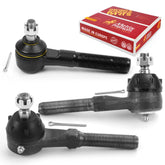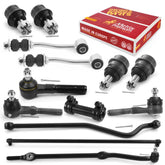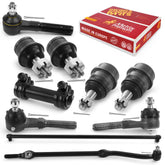Braking at High Speed vs. Low Speed
What Every Driver Should Know

Braking is one of the most crucial safety functions in a vehicle. Whether stopping from highway speeds or slowing down in traffic, understanding how braking works at different speeds can improve safety and vehicle performance.
How Braking Works
When you press the brake pedal, the braking system slows down the wheels by creating friction between the brake pads and rotors. The higher the speed, the more energy the brakes must absorb to bring the vehicle to a complete stop.
Braking at High Speed
Braking from high speeds requires more distance and puts greater strain on the braking system. Key factors include:
- Heat Buildup: The faster you're going, the more heat your brake components generate, which can lead to brake fade.
- Longer Stopping Distance: A vehicle traveling at 70 mph needs significantly more distance to stop compared to one going 30 mph.
- Increased Wear: Repeated high-speed braking can wear down brake pads and rotors faster.
Braking at Low Speed
Slowing down at lower speeds is generally less stressful on your braking system. However, some challenges still exist:
- Less Heat, But Not Zero Wear: Even at low speeds, brakes experience wear, especially in stop-and-go traffic.
- Risk of Brake Glazing: Frequent light braking can cause brake pads to develop a smooth surface, reducing effectiveness.
- ABS and Low-Speed Stops: Some vehicles with ABS may experience slight vibrations when braking at very low speeds.
Frequently Asked Questions
1. Does braking at high speeds wear out brake pads faster?
Yes. Braking at high speeds generates more heat and friction, which accelerates brake pad wear. The more often you brake hard at high speeds, the sooner you’ll need to replace your brake pads and rotors.
2. Why does my car take longer to stop at high speeds?
At higher speeds, your vehicle has more momentum, requiring more braking force and distance to come to a complete stop. This is why maintaining a safe following distance is essential.
3. Is it bad to brake too lightly at low speeds?
Yes. Light braking over long periods can lead to brake glazing, where the pads become too smooth and less effective. It’s important to apply firm, controlled braking when needed.
4. Can high-speed braking damage my rotors?
Yes. Intense braking from high speeds can cause excessive heat buildup, leading to warping or cracking of brake rotors over time.
5. What’s the best way to extend the life of my brakes?
Avoid sudden stops from high speeds, use engine braking when possible, and invest in high-quality brake parts for better durability.
Upgrading for Better Braking Performance
High-quality brake parts make a significant difference in braking efficiency and safety. Metrix Premium Chassis Parts provides durable brake rotors for a variety of vehicles. And starting in March, we will introduce high-quality ceramic and semi-metallic brake pads, offering improved stopping power and durability.
Find the Right Brakes for Your Vehicle
Looking to replace or upgrade your brake system? Use the search module at metrixpremiumparts.com to find the perfect fit for your vehicle. Our easy-installation brake parts ship directly to your doorstep, making DIY repairs or professional installation more convenient than ever.
Braking performance is essential for road safety. Understanding how your brakes react at different speeds helps you make better decisions and keep your vehicle in top condition.
Follow us on social media and sign up at our website for notifications about new posts and giveaways.
Previous Article: Thoughtful Gifts For The DIY Mechanic In Your Life









